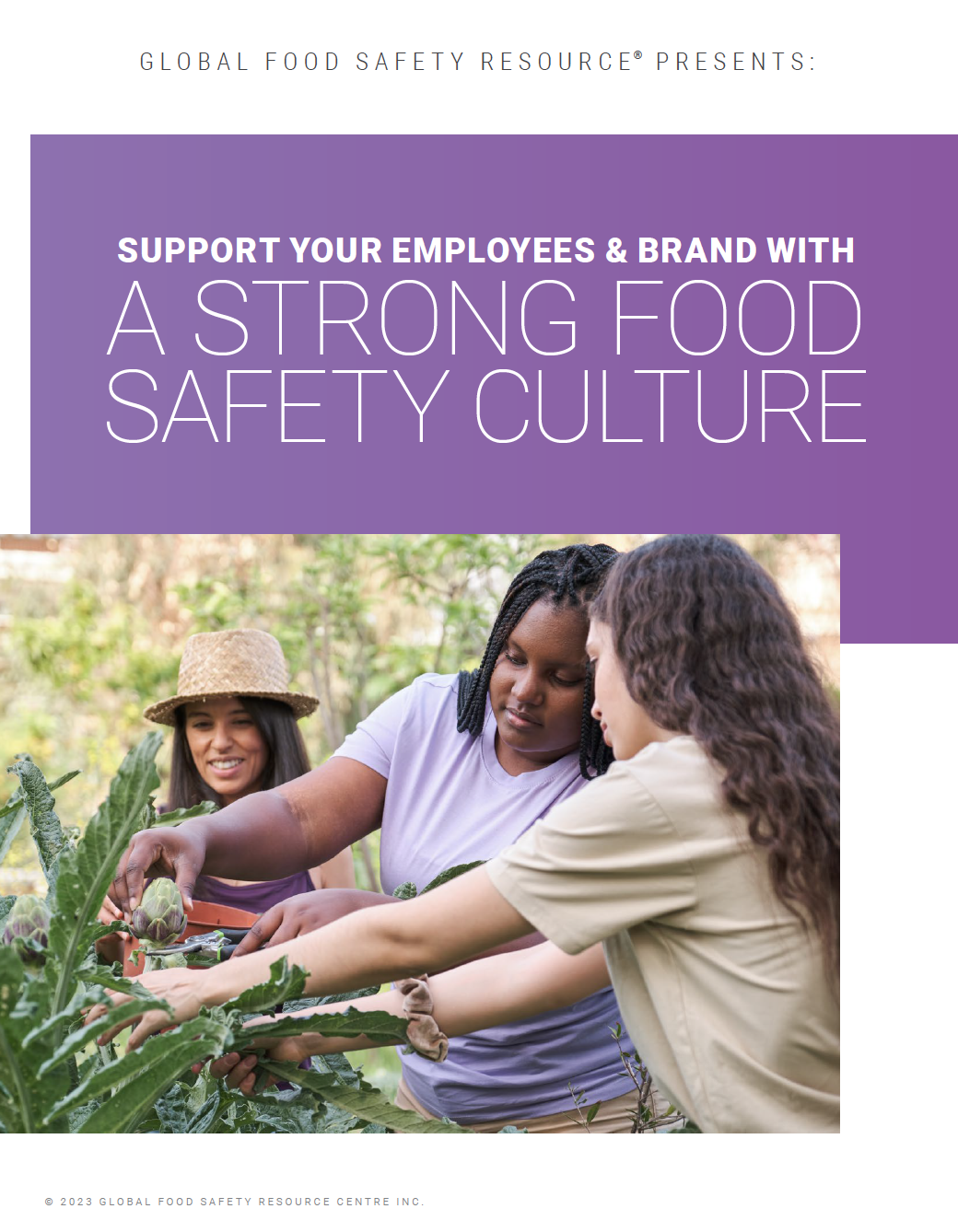Are Virtual Inspections Here to Stay Post Pandemic?
By Erin Rector
More than two years ago the world as we knew it became “remote” almost overnight thanks to the COVID-19 pandemic, with employees working from home in parts of nearly every organization. The food safety inspection world was no different. As a result, we began employing virtual inspections in response to the global crisis. However, as we start to resume our new normal, are virtual inspections now a thing of the past?
The pandemic has dramatically impacted our ability to conduct food safety audits in general. Local regulatory authorities were the most affected, many of which are still a year or two behind in many jurisdictions, followed by certification bodies that conduct GFSI audits. Most third-party auditing companies, such as NSF, have managed to stay on track by utilizing both virtual and on-site inspections.
Furthermore, the great resignation and the constant turnover of employees in restaurants, grocery stores, and hotels put us all at a heightened food safety risk. Today, many food sectors lack the staff to handle and protect our food products and ensure they are properly sourced. We have also lost seasoned individuals who can train and educate their teams on the correct practices that protect the supply chain and restaurant operations. So, while the pandemic has challenged our ability to conduct audits, the need for inspections has never been higher.
While the pandemic has challenged our ability to conduct audits, the need for inspections has never been higher.
A virtual food safety inspection is much like a regular inspection. However, it is conducted over a device such as a cell phone, computer, or eyewear technology. By nature, any virtual inspection is also an announced visit, as they must be arranged ahead of time so that both parties know when to log in to their devices. Once both parties are connected, the inspector instructs the person in charge (PIC) on what areas to show with their camera. The inspector will point out violations and best practices just as in a traditional in-person inspection. Once completed, the site is emailed a copy of its inspection results. The facility will still have to complete any corrective actions based on the results and potentially could have a reinspection if they are not performing to standard.
To date, virtual inspections continue to be impactful in the food safety auditing space. Virtual inspections allow oversight to continue in facilities that may not have an in-person inspector available. They are effective because there is still a trained professional verifying and validating processes and procedures that are imperative to keeping food safe. Questions can be asked and answered, and training and coaching are still conducted.
Much like any new process or procedure, virtual inspections have strengths and weaknesses. There are a lot of benefits to be gained, mainly their ability to save organizations time and money. Instead of having inspectors traveling across the country to do in-person inspections, a virtual inspection can be conducted anywhere with a strong Wi-Fi connection. They can also be much safer. In these pandemic times, virtual inspections protect your employees and reduce the risk of spreading disease. Removing the inspector’s presence in the facility eliminates the risk of them contracting disease or infecting others. Minimizing travel also means you can complete more inspections in a shorter time. In fact, many local jurisdictions are utilizing virtual inspections to catch up on the backlog of inspections.
However, there are some disadvantages to conducting virtual inspections. One key downside is that they must be pre-planned, so the facility has time to prepare for the inspection. Traditional visits are unannounced and can be conducted at any time without prior knowledge of the facility. The restriction of view is also a sizeable limitation, as you can only see what the PIC allows you to see. This is through no fault of their own, but the camera/computer lens is only so big. When conducting an in-person visit, being present means you can, at a whim, turn around at any given time to assess the situation and bend down to explore hard-to-see areas with a flashlight.
Virtual inspections have been made more accessible due to wearable technology such as EyeSucceed. Such devices create an immersive experience for the auditor. This new technology is a versatile tool that can also be used for training, auditing, and remote communication with other divisions of an organization. Like any new technology, there is a substantial learning curve. Most seasoned auditors prefer the familiarity of devices that they utilize daily. A strong WI-FI signal throughout the facility is imperative to eliminate connectivity issues. It also helps if you know the facility’s layout ahead of time or have the manager “walk you through” virtually so you can get the lay of the land and ensure you evaluate all areas of the facility.
Many companies have transitioned to virtual auditing in some aspects of their business. Whether it be internal inspections, training or utilizing a third-party such as NSF to conduct a visit, if your organization is interested in virtual inspections, contact your current provider to inquire if they offer these services. In these critical times, it’s essential to have the right people directing the PIC during virtual inspections. Expert auditors with thorough industry knowledge will be able to direct the PIC to areas of higher risk and contamination. They can also provide the correct coaching and training necessary for the situation, such as handwashing and temperature controls.
Erin Rector started in the food safety industry in 2007. Starting as a food safety auditor who was known for her ability to coach and train under tough circumstances. She has moved her way up through the ranks holding titles of District Manager, Technical Quality Consultant, and Master Trainer. Holding CP-FS, RE/HS, PCQI, and SQF Practitioner certificates, she has taken part in all aspects of the industry. Erin Joined NSF in April of 2022, bringing her knowledge and expertise to the Account Management team. She manages a wide variety of clients and is passionate about helping auditors and brands focus on growing their food safety programs.
About the Author:
Erin Rector started in the food safety industry in 2007. Starting as a food safety auditor who was known for her ability to coach and train under tough circumstances. She has moved her way up through the ranks holding titles of District Manager, Technical Quality Consultant, and Master Trainer. Holding CP-FS, RE/HS, PCQI, and SQF Practitioner certificates, she has taken part in all aspects of the industry. Erin Joined NSF in April of 2022, bringing her knowledge and expertise to the Account Management team. She manages a wide variety of clients and is passionate about helping auditors and brands focus on growing their food safety programs.

-
 FeaturedRisk management
The Cost of a Breach: What a Cyberattack Could Mean for Food Safety Recalls
FeaturedRisk management
The Cost of a Breach: What a Cyberattack Could Mean for Food Safety Recalls
-
 FeaturedRisk management
Securing the Food Chain: How ISO/IEC 27001 Strengthens Cybersecurity
FeaturedRisk management
Securing the Food Chain: How ISO/IEC 27001 Strengthens Cybersecurity
-
 FeaturedRisk management
Revolutionizing Food Safety Training: Breaking Out of the “Check-the-Box” Mentality
FeaturedRisk management
Revolutionizing Food Safety Training: Breaking Out of the “Check-the-Box” Mentality
-
 GFSI Standards
GFSI 2025: Building Trust, Tech-Forward Solutions, and Global Unity in Food Safety
GFSI Standards
GFSI 2025: Building Trust, Tech-Forward Solutions, and Global Unity in Food Safety
-
 FeaturedFood Safety
Integrated Pest Management: Strategies to Protect Your Brand’s Reputation
FeaturedFood Safety
Integrated Pest Management: Strategies to Protect Your Brand’s Reputation
-
 FeaturedFood Safety Culture & Training
No Open Door Policy: Challenges That Impact Pest Control in Food Processing Plants
FeaturedFood Safety Culture & Training
No Open Door Policy: Challenges That Impact Pest Control in Food Processing Plants




